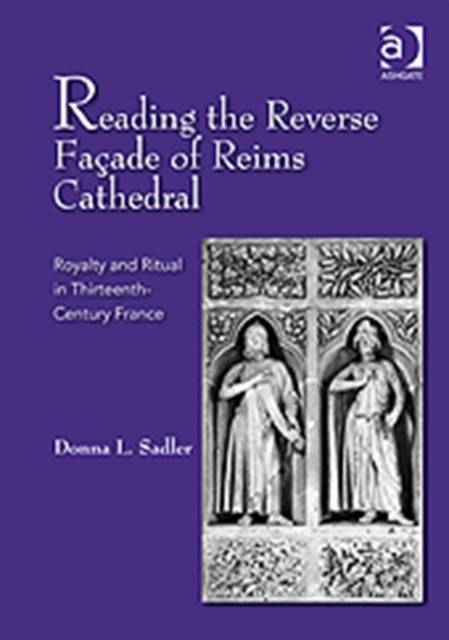
- Afhalen na 1 uur in een winkel met voorraad
- Gratis thuislevering in België vanaf € 30
- Ruim aanbod met 7 miljoen producten
- Afhalen na 1 uur in een winkel met voorraad
- Gratis thuislevering in België vanaf € 30
- Ruim aanbod met 7 miljoen producten
Zoeken
Reading the Reverse Façade of Reims Cathedral
Royalty and Ritual in Thirteenth-Century France
Donna L Sadler
Hardcover | Engels
€ 202,95
+ 405 punten
Uitvoering
Omschrijving
Though long recognized as one of the most beautiful works from the second half of the thirteenth century, the magnificent sculptural program of the reverse façade at Reims Cathedral has received little in the way of scholarly attention. Interpreting the iconography in the light of Latin texts associated with the building, its history and its ceremonial use, Donna Sadler assesses the significance of the reverse façade in light of other thirteenth-century visual programs associated with the court of Louis IX. The book's chapters deal with the history of the cathedral and its architectural antecedents; the iconographic message of the visual program, the meaning of the reverse façade and how it intersects with the overall iconography; the function of the verso and how it is enhanced by the marriage of form and content; and a consideration of contemporary works linked to the court of Saint Louis, concluding with a brief look at the new roles sculpture assumes as it migrates inside cathedrals. Ultimately this book reveals how the imagery on the reverse façade not only conforms to a system of memory and mode of medieval narratology, but also articulates a dominant ideological position regarding the interdependence of ecclesiastical and royal powers.
Specificaties
Betrokkenen
- Auteur(s):
- Uitgeverij:
Inhoud
- Aantal bladzijden:
- 298
- Taal:
- Engels
Eigenschappen
- Productcode (EAN):
- 9781409432432
- Verschijningsdatum:
- 26/09/2012
- Uitvoering:
- Hardcover
- Formaat:
- Genaaid
- Afmetingen:
- 175 mm x 246 mm
- Gewicht:
- 883 g

Alleen bij Standaard Boekhandel
+ 405 punten op je klantenkaart van Standaard Boekhandel
Beoordelingen
We publiceren alleen reviews die voldoen aan de voorwaarden voor reviews. Bekijk onze voorwaarden voor reviews.








